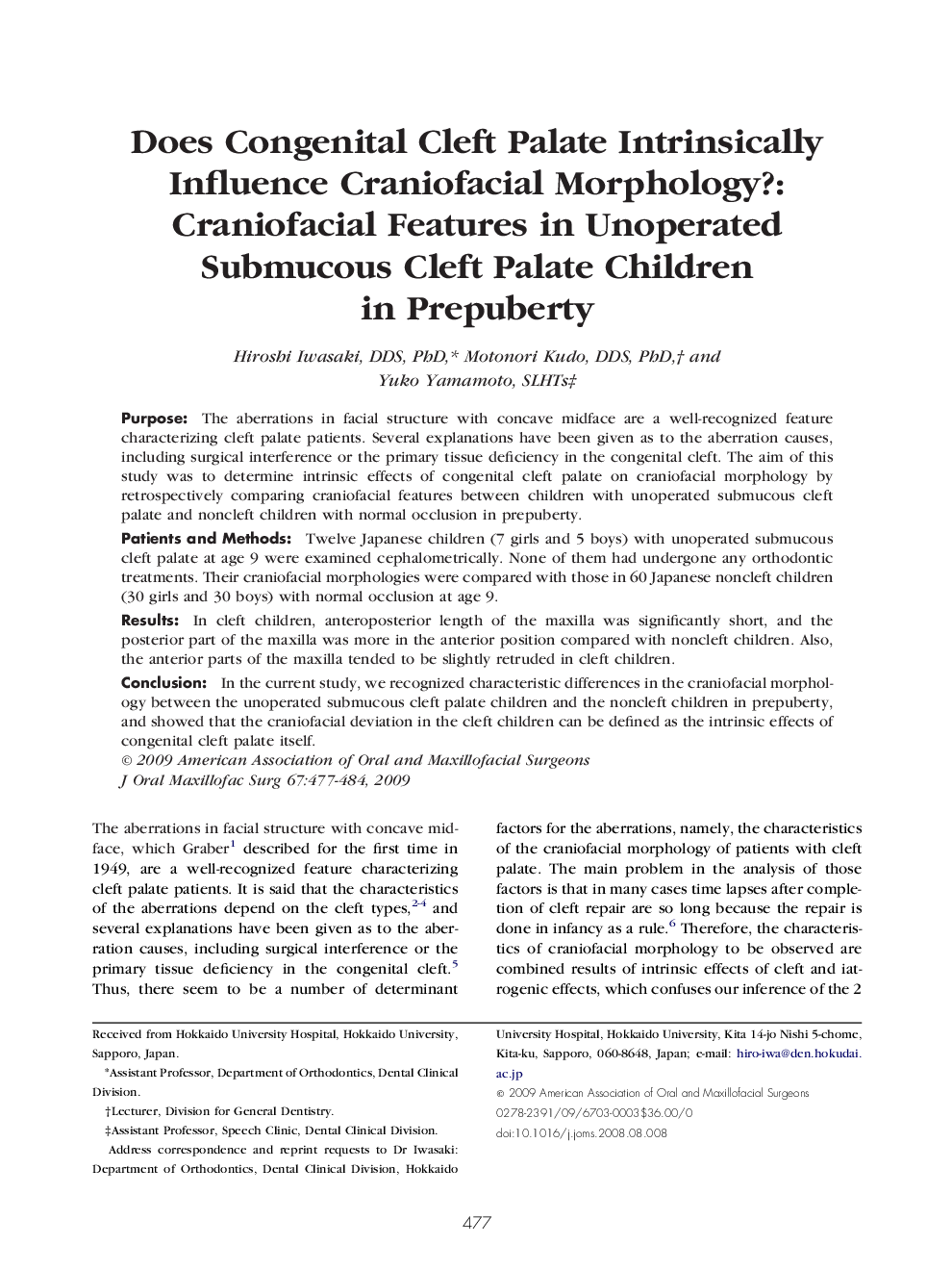| Article ID | Journal | Published Year | Pages | File Type |
|---|---|---|---|---|
| 3157350 | Journal of Oral and Maxillofacial Surgery | 2009 | 8 Pages |
PurposeThe aberrations in facial structure with concave midface are a well-recognized feature characterizing cleft palate patients. Several explanations have been given as to the aberration causes, including surgical interference or the primary tissue deficiency in the congenital cleft. The aim of this study was to determine intrinsic effects of congenital cleft palate on craniofacial morphology by retrospectively comparing craniofacial features between children with unoperated submucous cleft palate and noncleft children with normal occlusion in prepuberty.Patients and MethodsTwelve Japanese children (7 girls and 5 boys) with unoperated submucous cleft palate at age 9 were examined cephalometrically. None of them had undergone any orthodontic treatments. Their craniofacial morphologies were compared with those in 60 Japanese noncleft children (30 girls and 30 boys) with normal occlusion at age 9.ResultsIn cleft children, anteroposterior length of the maxilla was significantly short, and the posterior part of the maxilla was more in the anterior position compared with noncleft children. Also, the anterior parts of the maxilla tended to be slightly retruded in cleft children.ConclusionIn the current study, we recognized characteristic differences in the craniofacial morphology between the unoperated submucous cleft palate children and the noncleft children in prepuberty, and showed that the craniofacial deviation in the cleft children can be defined as the intrinsic effects of congenital cleft palate itself.
